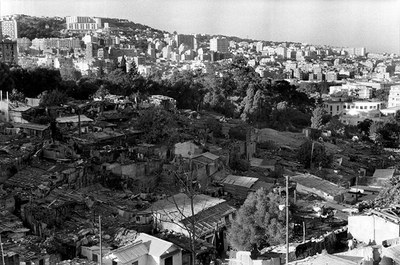
Although urban informality, from Mumbai’s mega-slums to Rio de Janeiro’s favelas, has recently been the focus of sustained attention by designers, planners, and urban theorists, the historical development of these urban landscapes has been largely overlooked. Focusing on a significant terrain within this broader global history, this study traces the emergence of the bidonville/karian in the late 1920s in Casablanca and its subsequent transformations between the Maghreb and France through the 1970s. Rethinking the city from the vantage point of the bidonville/karian reveals the integral connection of these sites to landscapes of extraction forged during the Moroccan Protectorate and in French Algeria. At the same time, these areas were shaped by competing property systems and by Ottoman and French practices of cultivation.
Sheila Crane is a Spring 2019 Mellon Fellow and associate professor and chair of the Architectural History Department at the University of Virginia.